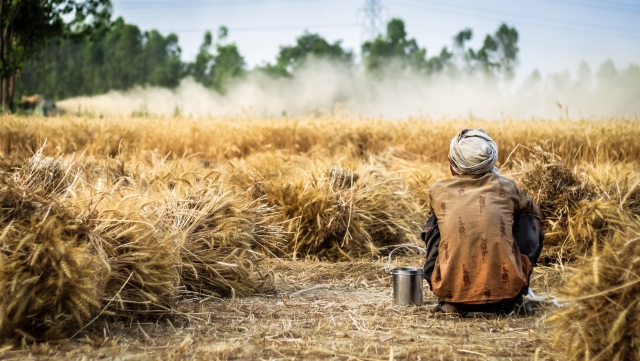Does India really need stocking limits on wheat?

If the Union Agriculture Ministry is to be believed, Indian farmers have harvested an all-time-high wheat crop of 112.93 million tonnes (mt) this time, surpassing last year’s record output of 110.55 mt. Against this background, the Narendra Modi government’s decision to impose stock limits on the cereal with effect from June 24 and applicable until March 31, 2025, “in order to manage the overall food security and to prevent hoarding and unscrupulous speculation” is inexplicable. Wholesalers and big-chain retailers will not be allowed to hold more than 3,000 tonnes, with the corresponding stock limits set at 10 tonnes for individual stores and at 70 per cent of the installed milling capacity for processors. All these entities have been directed to declare their stock position and update them regularly on the department of food and public distribution’s portal created for this purpose.
The stocking limits on wheat were first clamped in June last year, with these fixed at 2,000 tonnes (for wholesalers/big retailers), 10 tonnes (single outlets) and 75 per cent of installed capacity (processors), before being progressively lowered to 500 tonnes, 5 tonnes and 60 per cent respectively by February 2024. The limits were lifted from April 1 with the commencement of the new harvesting season, though the private trade was informally told to “avoid” buying any wheat brought by farmers at least for a month. That was meant to enable the government to shore up its own stocks. But now, with the marketing of the harvested crop completed, the stock controls have been formally reinstated. The reasons are probably three-fold. The first is retail cereal inflation ruling at 8.69 per cent year-on-year in May. The second is wheat stocks in government godowns, which, at 29.91 mt on June 1, were the lowest in 16 years for this date. The third is a not-so-great monsoon so far, which going forward can impact the production of rice as well, notwithstanding its reasonable stocks position for now.
The question to ask then is: How do stocking controls, along with restrictions and even bans on exports of non-basmati rice and wheat respectively, reconcile with official estimates of back-to-back record cereals output? The Modi government cannot be projecting one thing through the agriculture ministry (bumper crops) and another through the ministry of consumer affairs, food and public distribution (curbing hoarding). Why should cereal inflation be elevated, in spite of production touching new highs, and curbs on exports and stock limits placed on the domestic trade? If the government feels that the supply situation isn’t as comfortable as its production estimates suggest, it should simply scrap the 40 per cent duty on wheat imports. With elections over and farmers already selling their produce, there isn’t any political reason not to do so.
Read also
Write to us
Our manager will contact you soon



